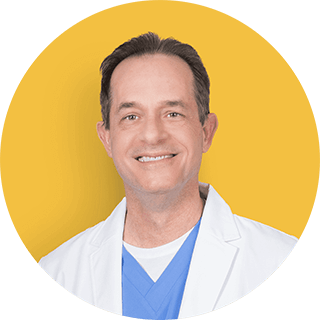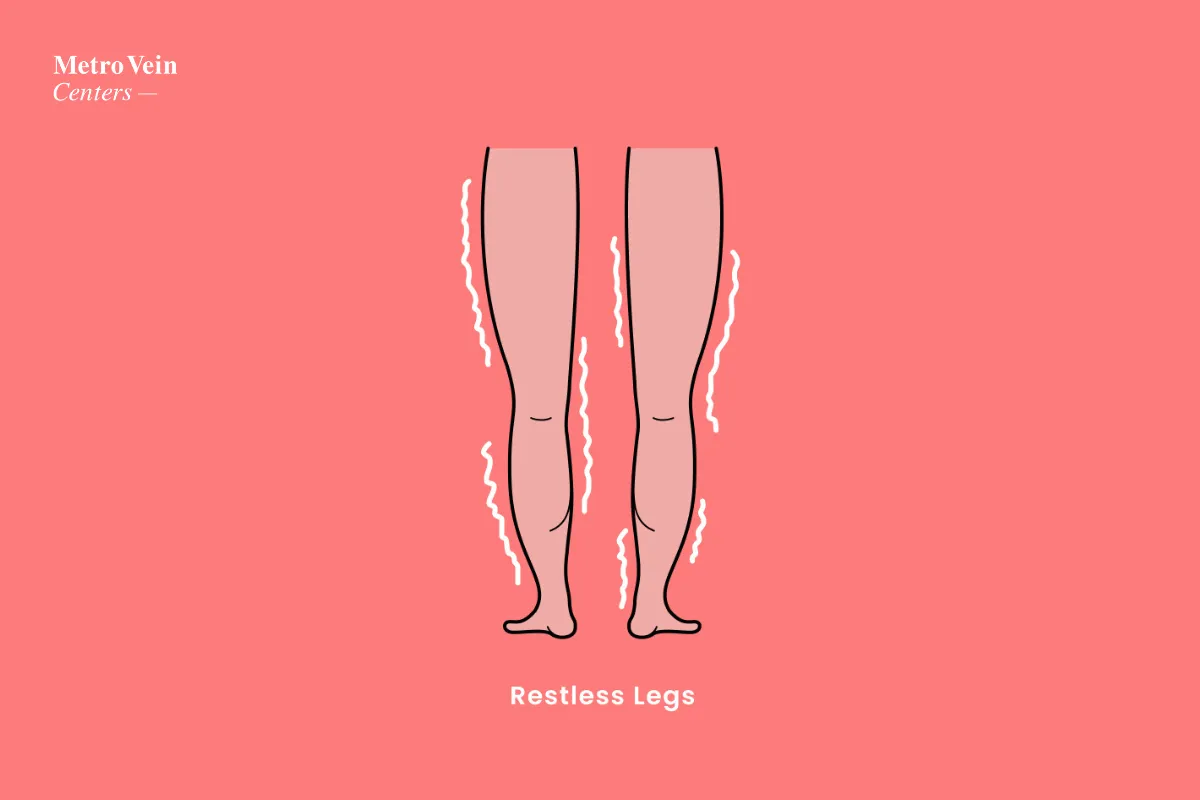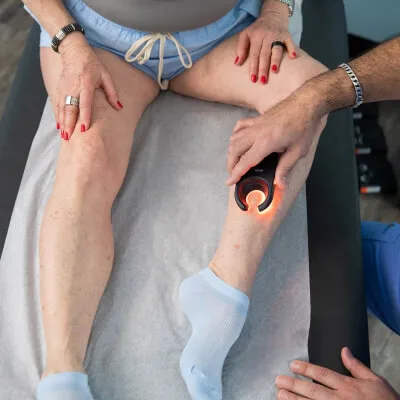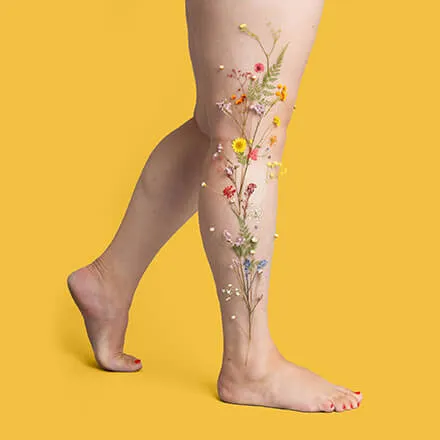Many of our patients ask whether varicose veins can cause restless legs. The answer is yes; restless legs can be caused by chronic venous insufficiency (CVI) also known as vein disease. Vein disease occurs when blood in the veins flows in the reverse direction, known as venous reflux. Venous reflux occurring over time can lead to varicose veins and other associated symptoms such as leg pain, heaviness, aching, and restless legs. Read on to explore the reasons why restless legs may manifest as a symptom of varicose veins and how you can achieve relief from restless legs and other symptoms through modern vein treatments.

Understanding Vein Disease
Vein disease, or chronic venous insufficiency, develops when veins struggle to pump blood from the legs to the heart efficiently. The circulatory system relies on valves within the veins to prevent backward blood flow. However, when these vein valves weaken or fail, blood can pool in the veins, leading to the development of bulging varicose veins.
The stress and strain of inefficient blood flow can create pressure in the veins called venous hypertension, distorting the vein walls and leading to visibly enlarged, twisted veins often noticeable to the naked eye near the skin's surface. Varicose veins primarily affect the legs due to the additional pressure of gravity against blood flow in your venous system. Symptoms of varicose veins may include pain when standing, swelling or edema, and tingling sensations stemming from the increased pressure within the veins caused by the compromised valves.
One of the most common symptoms, and among the most underdiagnosed, is restless legs. After a long day on or off your feet, depending on lifestyle and work factors, restless legs can negatively impact sleep, keeping patients awake well into the night and further stressing the body.
What are Restless Legs and Restless Legs Syndrome (RLS)?
Restless legs, also known as Willis-Ekbom disease, is a condition resulting in nocturnal leg movements, and an uncontrollable urge to move your legs (often at night or during prolonged periods of rest). This is why RLS follows a circadian rhythm, as the symptoms become more severe at night. They can be more than an isolated phenomenon that keeps you from finding a comfortable sleeping position. Restless legs syndrome is commonly associated with neurological concerns; however, it is also a symptom of vein disease, specifically in the presence of varicose veins.

Restless Legs and Varicose Veins
When venous insufficiency compromises blood flow, and valves fail to function correctly, blood accumulates, causing elevated pressure in the veins, which, in turn, may contribute to unpleasant sensations in the legs. Your body may intuitively urge you to move around because, as you do, your muscles will promote circulation organically through compression and contraction. This may be why you need to twitch, move, or shift your position so often while sleeping.
Another reason restless legs can be caused by vein issues is that stagnant blood within varicose veins may lead to inflammation and irritation of leg nerves, triggering difficult-to-ignore leg discomfort. Additionally, chronic venous insufficiency linked to varicose veins may result in insufficient oxygen supply to the leg muscles, intensifying the sensations that characterize restless legs.

Current Research
Research shows a strong link between varicose veins and RLS. Studies have indicated that many individuals with RLS symptoms also have underlying venous insufficiency and varicose veins and that vein treatment can significantly reduce the symptoms of RLS.
Common Symptoms of Varicose Veins and RLS
Both varicose veins and restless legs syndrome cause discomfort that can negatively impact your quality of life and sleep. Other common symptoms include cramping and heavy-feeling or tingling legs. The chronic nature of this condition emphasizes the importance of discovering and addressing the root cause to alleviate both physical and sensory symptoms.
The good news is that restless legs related to varicose veins and vein disease can be easily treated. Modern advancements in vein care have led to a wide variety of minimally invasive vein treatment options that can restore proper blood flow and stop restless legs. Most insurance providers offer coverage options for their treatment. Metro Vein Centers accepts over 200 insurance plans for varicose vein treatments!
Underlying Causes and Risk Factors: Poor Circulation and RLS
Understanding the link between varicose veins and restless legs involves recognizing how venous insufficiency and vein disease can impact blood flow. Poor circulation can result in the formation of varicose veins which are bulging, twisted veins protruding against the surface of the skin. When the valves in your veins are not working correctly, your blood can pool and cause distortions (the visible twisting nature of varicose veins is a result of increased pressure in the vein and pooling blood). This poor circulation is also what causes the sensation of restless legs.
Some common risk factors for developing varicose veins include age, gender, family history, weight, smoking, and an inactive lifestyle.

Diagnosing Varicose Veins and RLS
A comprehensive evaluation by a board-certified vein specialist can lead to a diagnosis of RLS caused by varicose veins. This usually includes venous ultrasound imaging. A personalized treatment plan is then created that addresses both the physical and sensory aspects of vein disease and the symptoms of restless legs.
Treatment Options for Varicose Veins and Their Impact on RLS
Treating restless legs as a symptom of varicose veins begins with treating the underlying vascular issue. Modern medical advancements offer a wide variety of minimally invasive procedures, including varicose sclerotherapy, endovenous laser ablation (EVLA), radiofrequency ablation (RFA), Varithena®, and Venaseal(TM). On average, these treatments require only about 30 minutes from start to finish, and they provide lasting relief and cosmetic improvements.
Lifestyle Changes to Manage Varicose Veins and RLS
Lifestyle changes that manage and prevent varicose veins can also prevent the symptoms of RLS associated with the condition. These include:
- Adding exercise to your routine
- Maintaining a healthy weight
- Quitting or reducing smoking and tobacco use
- Reducing caffeine and alcohol consumption
- Wearing compression stockings
- Eating healthy vein-healthy foods
- Elevating your legs

When to Seek Medical Attention
If you are experiencing varicose veins and the symptoms of restless legs, the best course of action is to be evaluated by a board-certified vein doctor. Signs that you need immediate medical attention include:
- Significant pain
- Swelling
- Red, hot-to-the-touch skin
- Skin changes
- Leg sores
- Fever
- Inability to sleep
Frequently Asked Questions
Can treating varicose veins improve restless legs syndrome symptoms?
Yes. Because of their connection, treating varicose veins can improve some patients' restless legs syndrome (RLS) symptoms.
How do doctors differentiate between varicose vein discomfort and RLS?
Symptoms of varicose veins more commonly include a heavy, achy feeling in the legs, and RLS feels more often like an uncontrollable urge to move your legs during the night. If varicose veins cause your RLS, you will likely experience symptoms of both.
Are there any shared risk factors between varicose veins and restless legs syndrome?
Yes. Poor circulation is a common cause of both varicose veins and restless legs.
Can compression stockings help with both varicose veins and restless legs?
Yes. Compression therapy (wearing compression stockings) is an effective way to manage the symptoms of both varicose veins and restless leg syndrome.
Is there a genetic link between varicose veins and restless legs syndrome?
Yes. There is a genetic or familial history component to both varicose veins and RLS.
How does poor circulation contribute to both varicose veins and RLS?
Poor circulation causes chronic venous insufficiency, which can lead to varicose veins and contributes to RLS.
Can pregnancy-related varicose veins trigger restless legs syndrome?
Yes, hormonal changes associated with pregnancy, along with the weight of the baby can cause varicose veins and restless legs syndrome (RLS) due to poor blood circulation.
What lifestyle changes can help manage both varicose veins and RLS?
Lifestyle changes that can help manage varicose veins and RLS include following an exercise routine, maintaining a healthy weight, giving up smoking and tobacco use, reducing caffeine and alcohol consumption, compression therapy, good nutrition, and elevating your legs.

Dr. Philip LoPresti
Meet Dr. Philip LoPresti DO, DABVLM, FACS, a board-certified vein specialist and surgeon with over 20 years of experience. Schedule an appointment with him in Queens, NY today.
Meet Dr. Philip LoPresti
Trusted insight from the nationally accredited, board-certified vein doctors at Metro Vein Centers.






